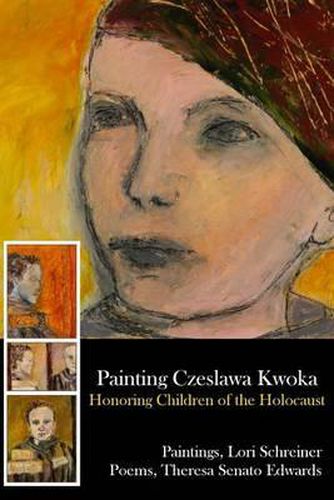Readings Newsletter
Become a Readings Member to make your shopping experience even easier.
Sign in or sign up for free!
You’re not far away from qualifying for FREE standard shipping within Australia
You’ve qualified for FREE standard shipping within Australia
The cart is loading…






This collaboration between painter Lori Schreiner and poet Theresa Senato Edwards was inspired by photographs taken at Auschwitz by Holocaust survivor Wilhelm Brasse. The photographs sent Schreiner to the canvas and her paintings set Edwards’ pen to paper. The resulting collaboration brings the children behind the images to life, gives perspective and dimension to their personhood, lends vitality to their memory. The reader gets a sense of what each individual child might have been like, what each little life might have meant. The children portrayed in this work came from Belgium, Germany, Lithuania, the Netherlands, Poland, and Ukraine; they were Jewish, Roman Catholic, Jehovah’s Witness, Gypsy, mixed race, gay. They are representative of the spectrum of lives lost in the Holocaust. The art and poetry in this book juxtapose indelible lives with catalogued identification numbers as the artists confront the inhumanity of the Holocaust, bringing the reader along to witness.The United States Holocaust Memorial Museum and the State Museum Auschwitz-Birkenau in Oswiecim, Poland provided information about the children in this book and granted permission to reproduce their photographs.
$9.00 standard shipping within Australia
FREE standard shipping within Australia for orders over $100.00
Express & International shipping calculated at checkout
This collaboration between painter Lori Schreiner and poet Theresa Senato Edwards was inspired by photographs taken at Auschwitz by Holocaust survivor Wilhelm Brasse. The photographs sent Schreiner to the canvas and her paintings set Edwards’ pen to paper. The resulting collaboration brings the children behind the images to life, gives perspective and dimension to their personhood, lends vitality to their memory. The reader gets a sense of what each individual child might have been like, what each little life might have meant. The children portrayed in this work came from Belgium, Germany, Lithuania, the Netherlands, Poland, and Ukraine; they were Jewish, Roman Catholic, Jehovah’s Witness, Gypsy, mixed race, gay. They are representative of the spectrum of lives lost in the Holocaust. The art and poetry in this book juxtapose indelible lives with catalogued identification numbers as the artists confront the inhumanity of the Holocaust, bringing the reader along to witness.The United States Holocaust Memorial Museum and the State Museum Auschwitz-Birkenau in Oswiecim, Poland provided information about the children in this book and granted permission to reproduce their photographs.